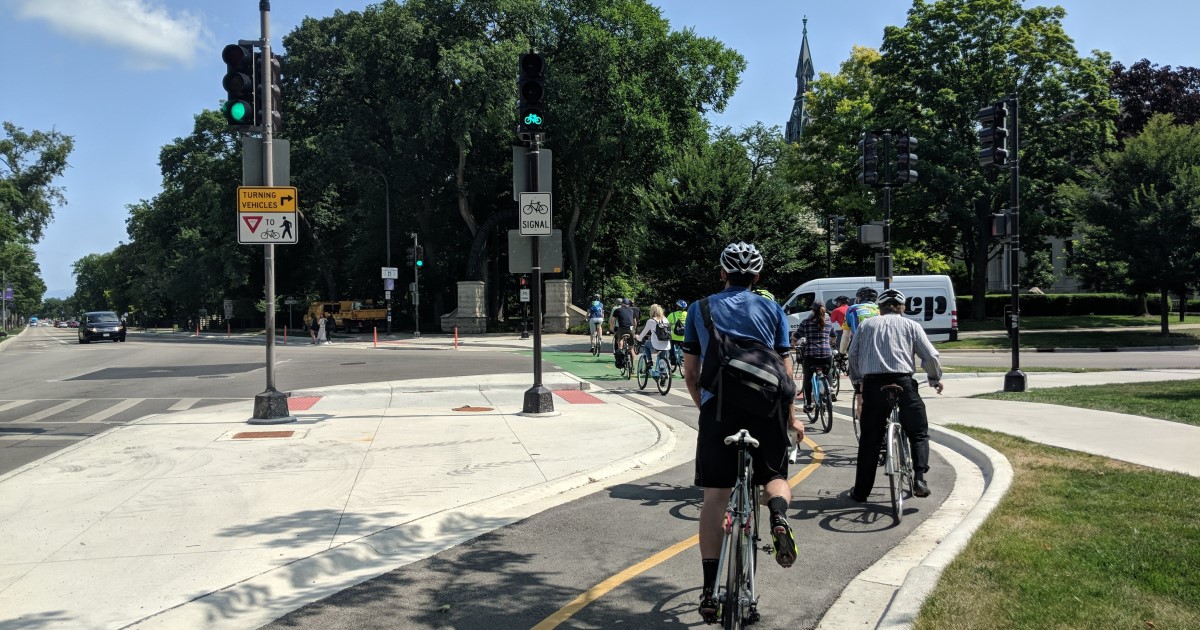The pandemic has reinforced the dangers behind street designs that encourage excessive vehicle speeding. Throughout the country last spring, as more places closed and roads emptied, the rate of fatalities relative to the number of miles driven jumped to the highest in over a decade.
In northeastern Illinois alone, averaged annual traffic fatalities have grown by almost 17 percent since 2012.To address these dangerous trends, communities throughout the region are turning more roads into complete streets and seeing safer conditions as a result.
Complete streets are planned, operated, and maintained to meet the needs of all users, regardless of age, ability, or mode of travel.
When done well, complete streets can support economic activity through higher foot traffic and other community goals, such as equity, sustainability, and affordability. For example, by encouraging walking and biking, complete streets reduce reliance on cars and their carbon emissions.
But complete streets haven’t yet been fully leveraged as a safety solution. As communities in the region have experienced, a redesigned road that better serves all travelers can effectively manage vehicle speeds and minimize crashes involving bicyclists and pedestrians.
Evanston officials recently converted traffic lanes along a high-traffic stretch of Dodge Avenue into protected bike lanes with posts and new striping in both directions. According to city data, Evanston saw 16 fewer crashes involving injuries in the first year after the project was completed.
In McHenry County, local governments collaborated and planned for formal complete streets programs to not only address safety, but also support walking and biking. Algonquin officials, in particular, are using complete streets strategies, like narrowing roads and adding bike paths, to manage vehicle speeds and increase pedestrian traffic through its downtown.
Communities increasingly are looking for solutions to improve the safety of all travelers. Through our Regional Traffic Safety Action Agenda, the Chicago Metropolitan Agency for Planning (CMAP) is meeting with communities and stakeholders to find ways to improve travel safety.
Even before the pandemic, the number of people struck and killed by drivers nationwide while walking increased by 45 percent over the past decade, based on data from Smart Growth America. Other national figures show pedestrians and bicyclists have much lower survival rates in serious crashes, especially when drivers exceed speeds of 20 mph.
Communities also can try out designs that create safer conditions in the short term. Chicago recently installed bike lanes using a lower-cost barrier to separate bicyclists from car travelers. On-street bike racks, like ones in Highland Park, provide affordable ways to free up sidewalk space for pedestrians and amenities like outdoor seating.
CMAP is committed to working with our communities to make similar changes to benefit all travelers. Complete streets programs can improve safety while providing residents with accessible and affordable travel options.
Join the discussion about complete streets during our next CMAP Talks on Wednesday, April 21, at 10:00 a.m. The panelists for the hour-long webinar will dive deeper into how design can improve safety. Do you also have a success story about a complete street in your community? Please contact Victoria Jacobsen at vjacobsen@cmap.illinois.gov.
